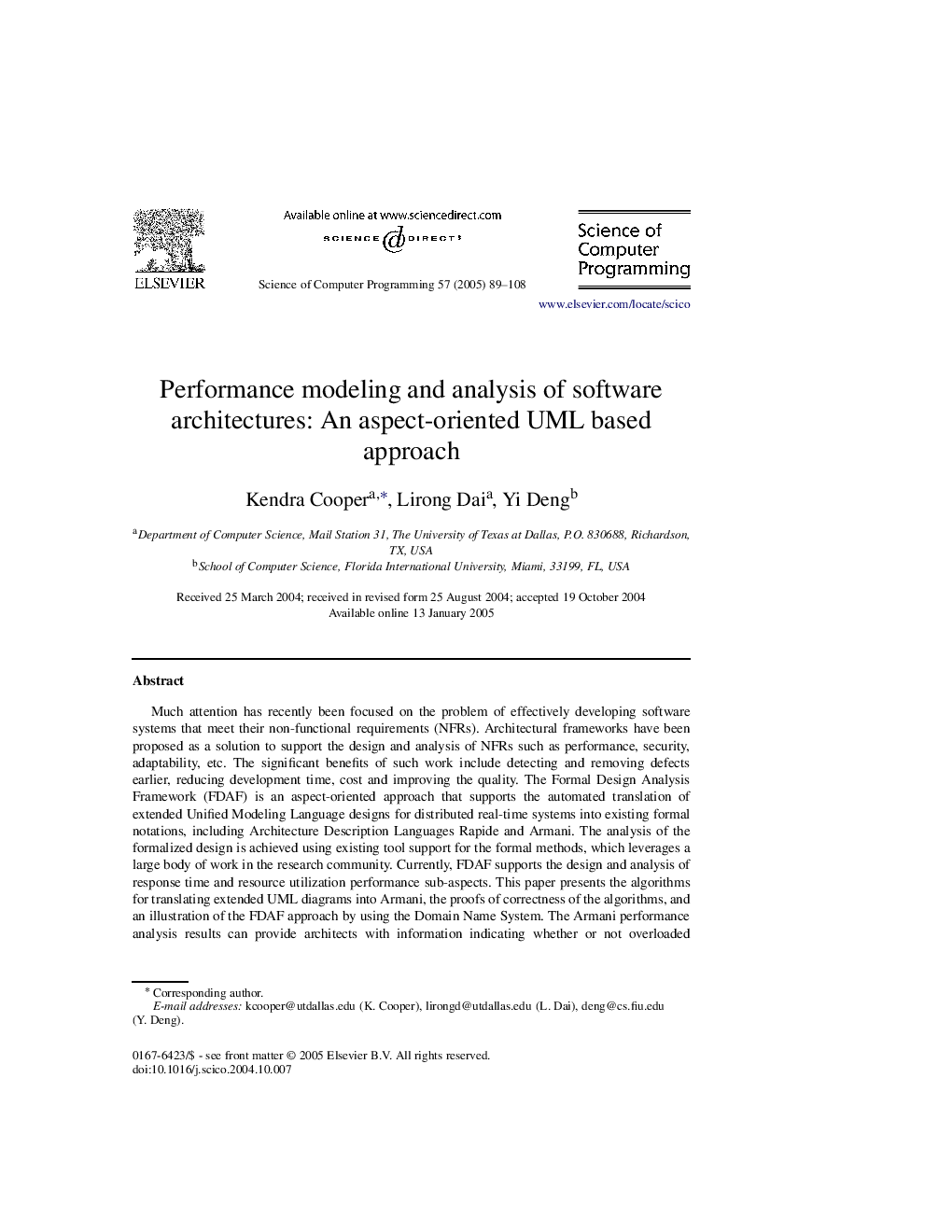| کد مقاله | کد نشریه | سال انتشار | مقاله انگلیسی | نسخه تمام متن |
|---|---|---|---|---|
| 9657433 | 1441793 | 2005 | 20 صفحه PDF | دانلود رایگان |
عنوان انگلیسی مقاله ISI
Performance modeling and analysis of software architectures: An aspect-oriented UML based approach
دانلود مقاله + سفارش ترجمه
دانلود مقاله ISI انگلیسی
رایگان برای ایرانیان
کلمات کلیدی
موضوعات مرتبط
مهندسی و علوم پایه
مهندسی کامپیوتر
نظریه محاسباتی و ریاضیات
پیش نمایش صفحه اول مقاله

چکیده انگلیسی
Much attention has recently been focused on the problem of effectively developing software systems that meet their non-functional requirements (NFRs). Architectural frameworks have been proposed as a solution to support the design and analysis of NFRs such as performance, security, adaptability, etc. The significant benefits of such work include detecting and removing defects earlier, reducing development time, cost and improving the quality. The Formal Design Analysis Framework (FDAF) is an aspect-oriented approach that supports the automated translation of extended Unified Modeling Language designs for distributed real-time systems into existing formal notations, including Architecture Description Languages Rapide and Armani. The analysis of the formalized design is achieved using existing tool support for the formal methods, which leverages a large body of work in the research community. Currently, FDAF supports the design and analysis of response time and resource utilization performance sub-aspects. This paper presents the algorithms for translating extended UML diagrams into Armani, the proofs of correctness of the algorithms, and an illustration of the FDAF approach by using the Domain Name System. The Armani performance analysis results can provide architects with information indicating whether or not overloaded components exist in the design. If such a component exists, then the architect iteratively refines the UML architecture to meet the clients' requirements.
ناشر
Database: Elsevier - ScienceDirect (ساینس دایرکت)
Journal: Science of Computer Programming - Volume 57, Issue 1, July 2005, Pages 89-108
Journal: Science of Computer Programming - Volume 57, Issue 1, July 2005, Pages 89-108
نویسندگان
Kendra Cooper, Lirong Dai, Yi Deng,